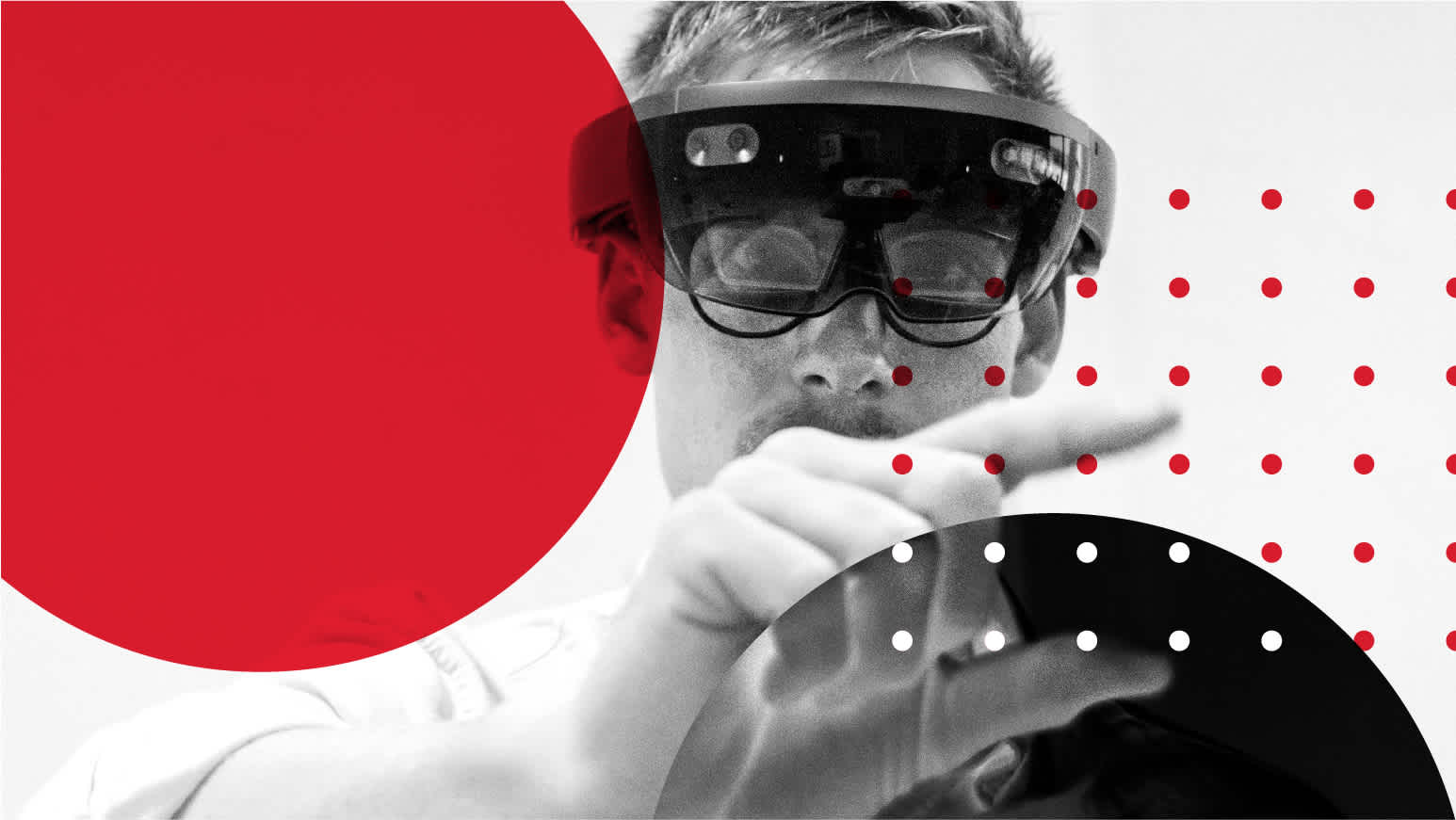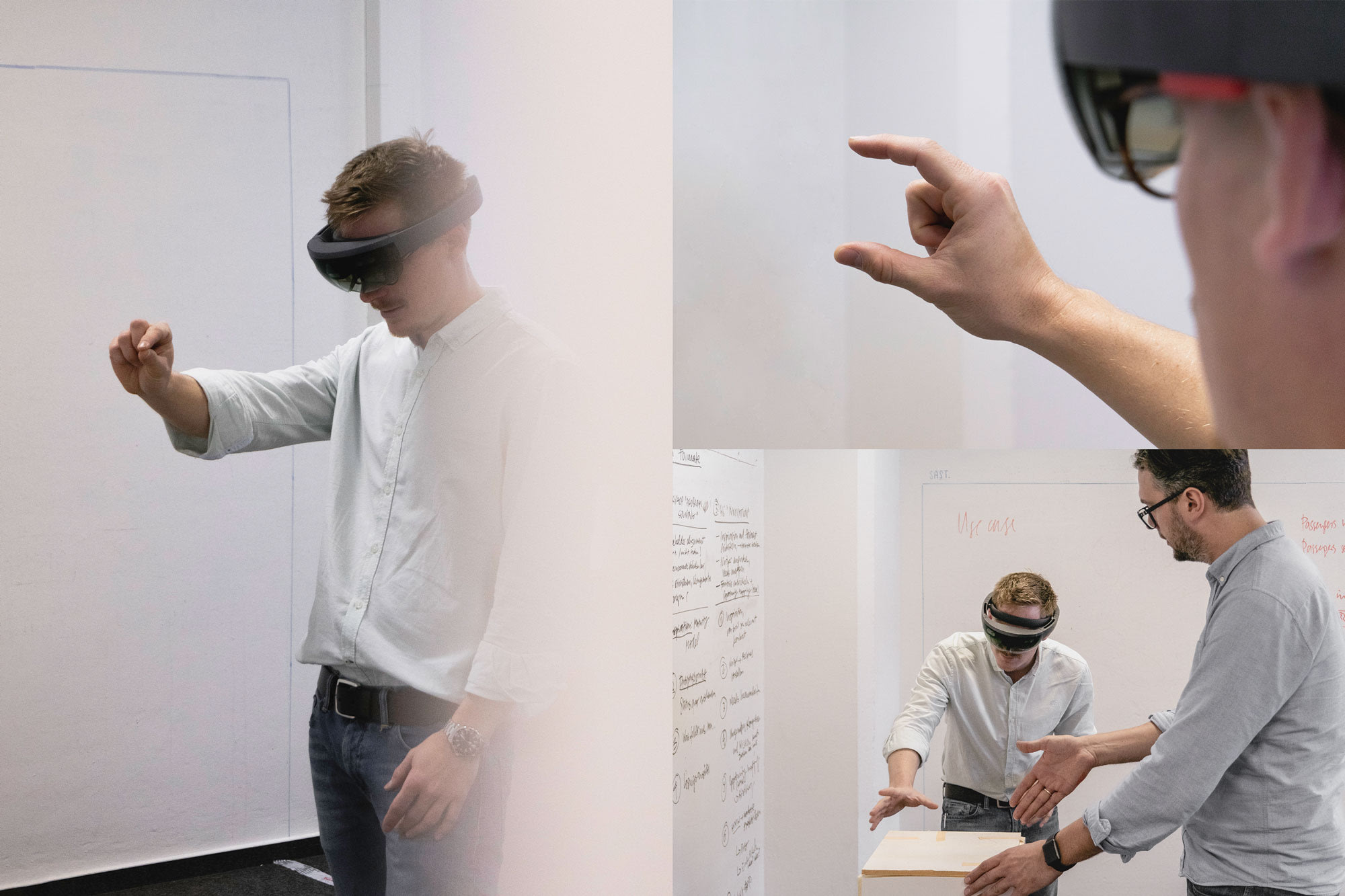Insights
How to Holo: Benefits vs Pitfalls

Earlier this year we supported one of our clients launching their Internet of Things (IoT) platform business at the Consumer Electronics Show (CES) in Las Vegas with an interactive wall and a HoloLens application.
With the help of three interactive scenarios, the visitors were able to experiment with different use cases, such as security checks at the airport or line queuing in a restaurant. These scenarios were shown not only on a display wall, but could also be experienced immersively through the use of a Microsoft HoloLens.
Together with our expert Claus Helfenschneider we developed a concept for this interactive three dimensional experience. Users could view the scenario from different angles and zoom in and out of the scenery independently.

This is what we learned in designing and developing the HoloLens application.__
-
The HoloLens was a huge crowd-puller and, in combination with our application, not only a nice add-on to their CES booth, but also a valuable addition to our client’s brand communication. It aroused the interest of many visitors, which is why you should think about how to target the people you want to reach.
-
The field of view is limited, but helps to focus. Since the Holo Lens, in contrast to VR glasses, also allows the real environment to be seen, it must be clear where the virtual projection takes place. Especially in an environment like a trade fair, where a lot of noise and distraction is in the background, it is of elementary importance to create clarity. One side effect was that people felt much more comfortable because they were not completely separated from the outside world– a typical side effect of VR glasses. This also helps with simple things like the fear of your bag being stolen during the use of those immersive applications.
-
Use as few gestures as possible. The HoloLens uses special gestures that must be performed by hand in the field of view. As the arm must always be stretched out, this can quickly become tiring unless you spent most of your free time in the gym. Instead you can involve the space much more and direct the user's gaze in order to perform certain interactions or absorb information.
-
Especially in the case of our project we noticed that you have to plan time for experimenting. The functional possibilities of the HoloLens have not yet been extensively documented, which is why you have to work out many aspects yourself. This requires time and budget but will lead to exceptional ideas and concepts.
-
Even though many characters had to be animated in our scenarios, all of which have their own behavior, we did not really reach the technical limits of the HoloLens at any point. It might require the creativity and time of a software developer to bring the ideas to life that you have in mind. But in general the motto is think big!
And we can’t wait to continue designing and developing with the upcoming HoloLens 2!